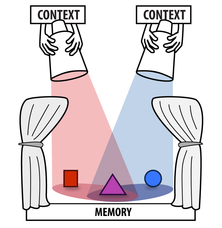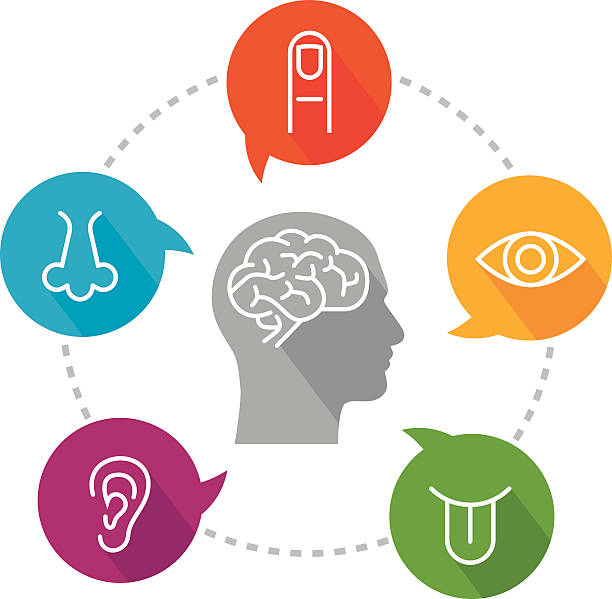In the first blog, I shared two examples of memory retrieval. Inspired by them, I hypothesize that there are different kinds of retrieval cues in various situations. Therefore, in this blog, I will further explore the categories of memory cues and the mechanism through the experiment with five people and an interview with one of them.
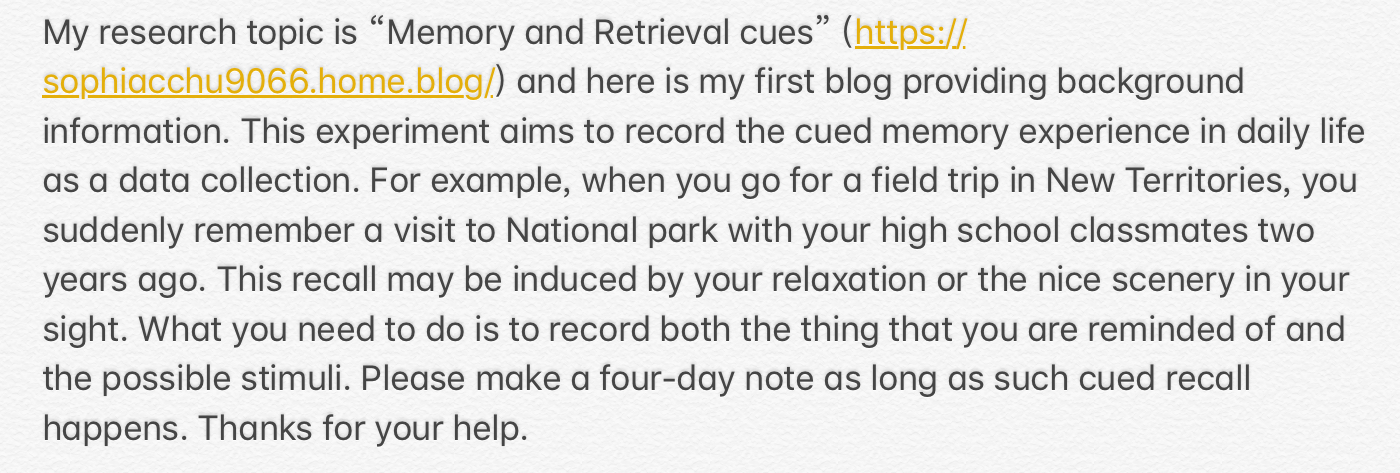
Records from 5 undergraduates are carefully summarized and analysed into the following image full of keywords. Despite the small sample size, there are still insights into the types of retrieval cues generated from the description.
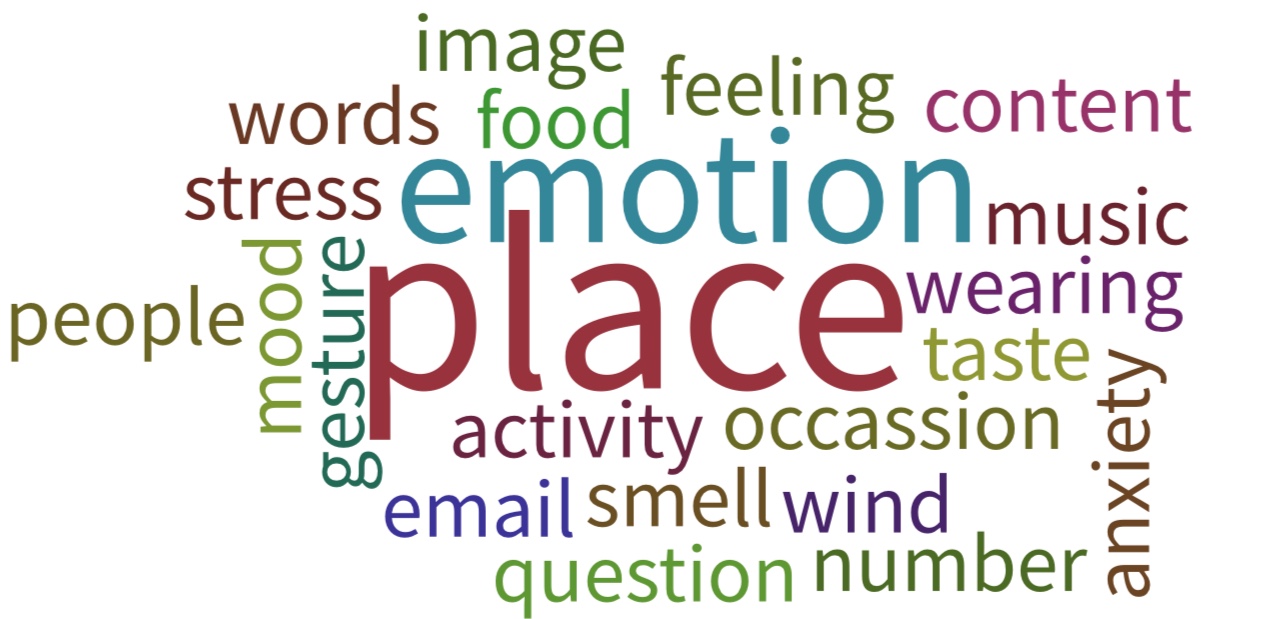
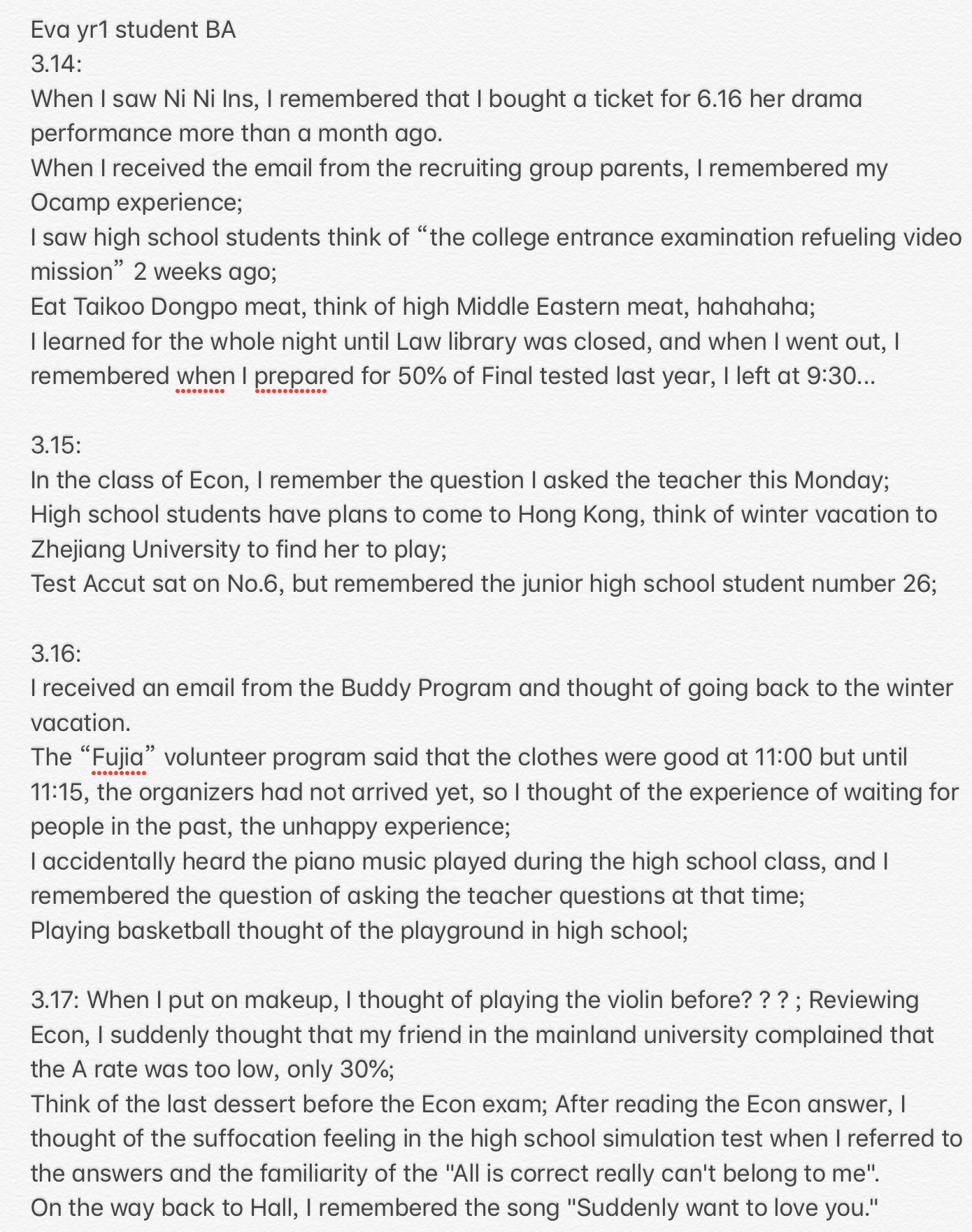
Fig.3 Eva records 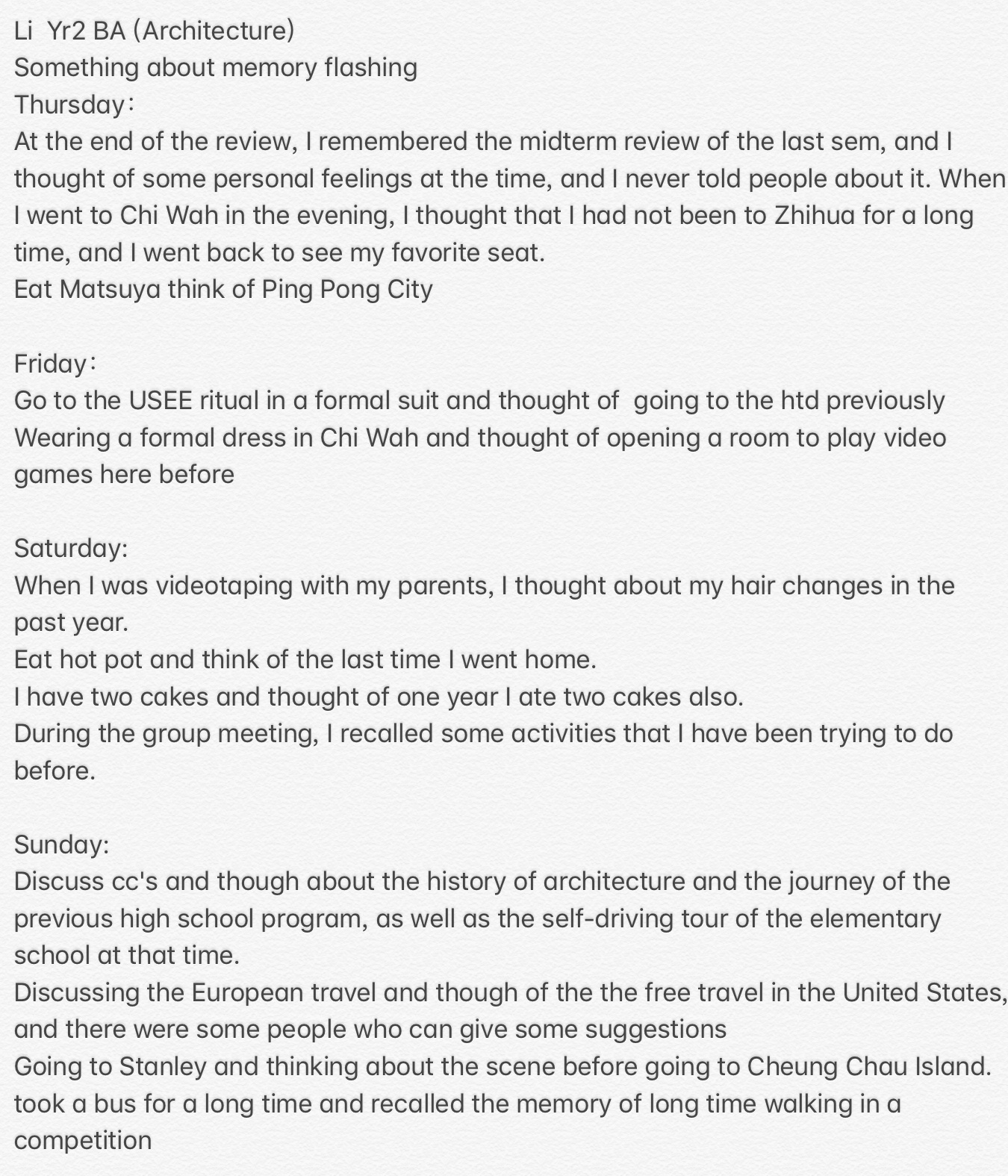
Fig.4 Li records 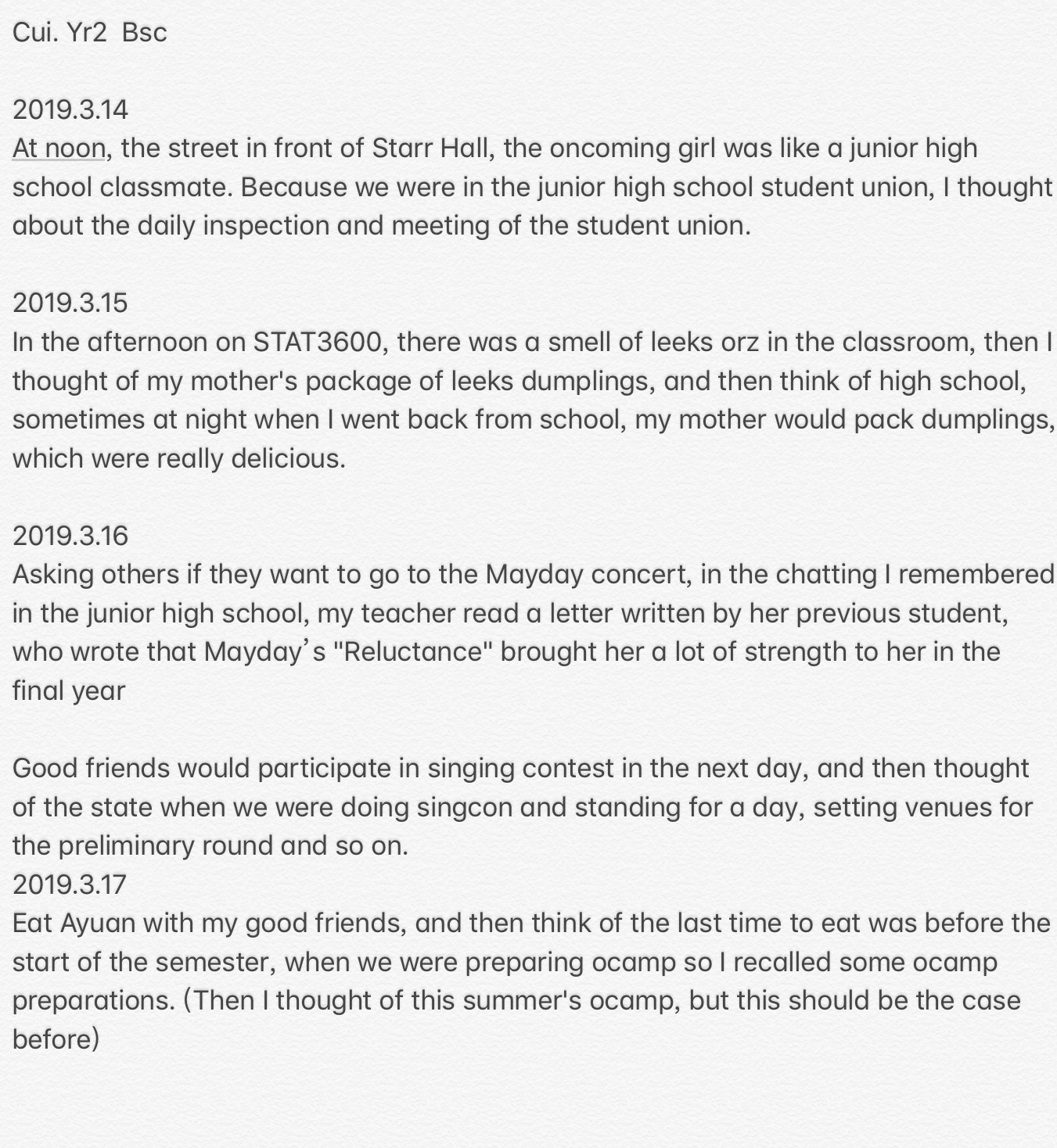
Fig.5 Cui records 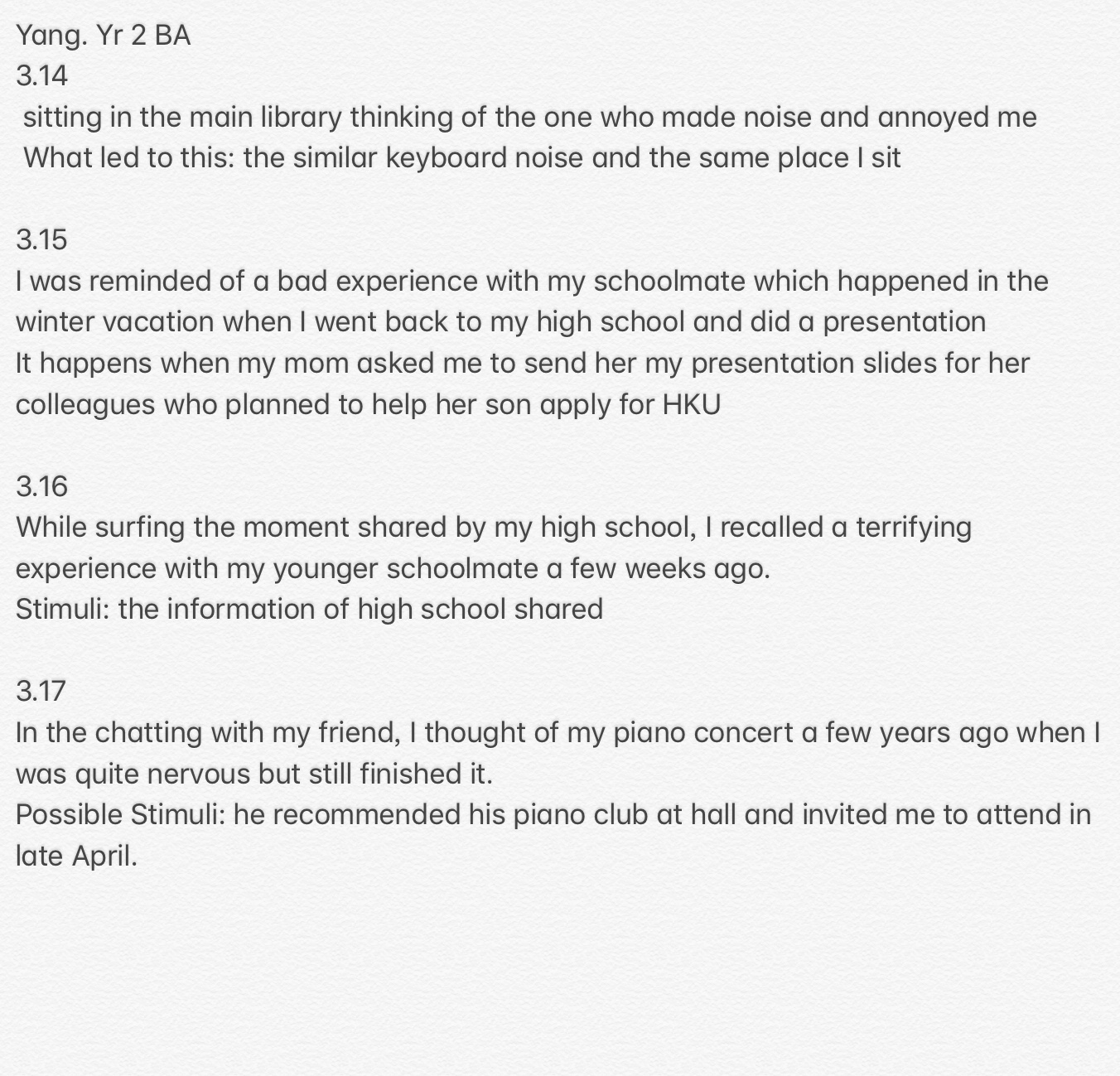
Fig.6 Yang records 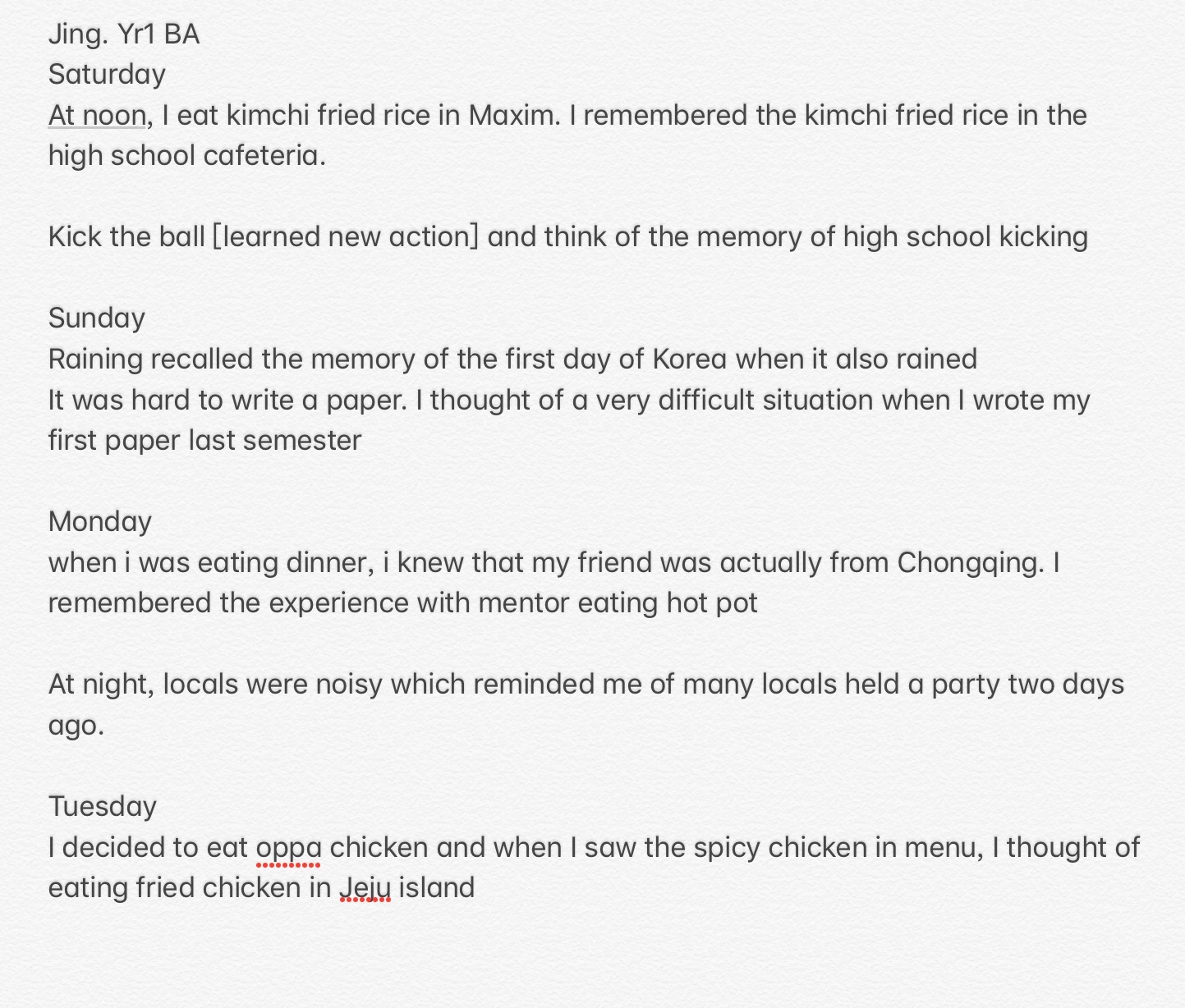
Fig.7 Jing records
Memories are held in the storage of the human brain by a web of associations which are generated while making new memory and then act as prompts to trigger memory retrieval (Retrieval cue, n.d.). That is to say, everything can be cues as long as it is included in encoding.
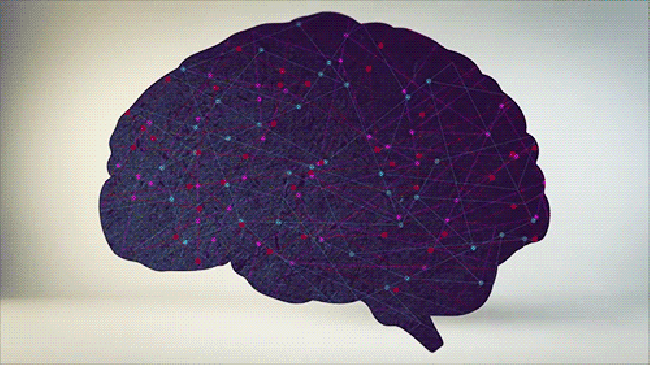

Firstly, exposed to the external environment, people tend to capture information around and arouse memory of the episode including such information. Reviewing the first blog, if one suddenly forgets something on half way, he will retrace his steps to retrieve the memory, which is a way of returning to the right context and sense cues to realize retrieval. Similarly, when Li went to Chi Wah, he remembered playing video games there before. According to the records, various scenes such as a specific place, the weather, and special activities, are all powerful external cues to trigger matching memories markedly. Therefore, cues depending on external environments or conditions, are categorized into “context-based cues.”
Secondly, perception-based cues are concluded in response to the keywords such as “image,” “smell”, and “music”, thus being further categorized into visual cues, olfactory cues and aural cues. The picture of fried chicken reminded Jing of eating chicken in Jeju island; While Cui received the smell signal of leeks in the classroom, he thought of the dumplings made by mum; Immersed in the same music played during the class breaks in high school, Eva remembered the happy time of asking teachers about textbook questions. The perception of human stored in mind can lead people to the past memory.
Lastly, another main type of keywords include emotions, mood and other psychological situations. Eva was nervous when she checked ECON answers, and thought of similar experience in high school with such feeling. Besides, her unpleasant experience of waiting for others illustrates that negative emotion”anxiety” can recall unhappy memories of waiting. Thus, a given state can recall memories that are consistent with this internal condition. These cues are called “state-based cues” having impacts on memory retrieval. However, due to the limitation of the experiment, this point needs more research.
At the end of this blog, I would like to share a new finding from the interview with Eva that she found no matter schoolmates, music or school publicity on Wechat can induce her memory of high school stories. So is there any relationship between memory retrieval and the number of cues? This question will be discussed in the next blog.
Word count: 498
References:
Retrieval Cue. (n.d.). In Alleydog.com’s online glossary. Retrieved from: https://www.alleydog.com/glossary/definition-cit.php?term=Retrieval+Cue
Retrieval Cues | Introductory Psychology Blog (S14)_C. (2014, March 6). Retrieved from https://sites.psu.edu/intropsychsp14n3/2014/03/06/retrieval-cues/
9.2 How We Remember: Cues to Improving Memory – Introduction to Psychology – 1st Canadian Edition. (2014, October 17). Retrieved from https://opentextbc.ca/introductiontopsychology/chapter/8-2-how-we-remember-cues-to-improving-memory/
